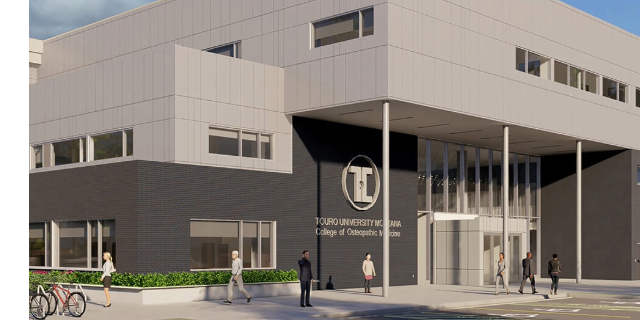Rogue Valley saw lowest home sales since 2014; median home prices hardly budged
Published 5:15 pm Monday, January 22, 2024

- This 3-bedroom house off of Sandstone Drive in Medford is listed for $449,999, only slightly above east Medford's median home price of $430,000. The number of homes sold plummeted across Jackson County in 2023, but prices largely held steady due to declining inventory.
Despite home sales falling to a low not seen in nearly a decade, prices largely held steady in Jackson County last year.
The number of homes sold in Jackson County fell to 2,650 in 2023, down 26% from the 3,601 homes sold the year before and the lowest number recorded since 2014, according to numbers provided by the Rogue Valley Association of Realtors.
Nationwide, home sales in 2023 fell to their lowest level since 1995. Southern Oregon’s home sales mirrored the trend, but didn’t fall below the record low 1,571 home sales set in 2008, according to Loran Hughes, technology officer at the association. Local home sales have been recorded since 1998.
Median home sale prices, however, fell less than 5% to $419,000 in 2023.
Ashland real estate broker Colin Mullane, a past National Association of Realtors regional vice president and past Oregon Association of Realtors president, said in a press conference Monday that the mild change in prices indicates that local home buyers are adapting by shifting their searches down market.
He pointed to Ashland’s median price for existing homes falling 3.5% to $530,500, while Central Point’s median grew 4.1% to $385,000.
“I think in the more expensive markets (the declines) are indicative of home buyers moving down,” Mullane said.
East Medford’s median price fell by $5,000 to $430,000, but Mullane said that “east Medford isn’t just east Medford hills.” Mullane stressed that median home prices are not an indicator of home values, but instead are used to monitor pricing trends over time.
The numbers are harder to analyze in “extraordinary circumstances” such as the current rising interest rates and low inventory.
“It would be incorrect to infer that one market in the Rogue Valley is more resilient to stable pricing than another,” Mullane said.
Mullane said he’s heard some arguments that Ashland was less affected during the foreclosure crisis, and “there’s a semblance of truth to that” because the bulk of owners had more equity at the onset of the Great Recession. Homeowners, however, were not entirely insulated.
“The prices dropped just as much,” Mullane said.
Presently, the Rogue Valley remains a “sellers’ market,” Mullane said. Inventory nearly doubled from 2.72 months’ supply in 2022 to 3.59 in 2023, but both numbers are below the six months of inventory considered normal.
Roughly a year and a half since rising interest rates put an end to historic low mortgage rates, Mullane said buyers are starting to let go of an expectation that rates will fall as abruptly as they rose.
“They no longer have the expectation that you’re going to see 3% come back to the market,” Mullane said.
As buyers consider wading back into the market, however, their purchasing power isn’t what it once was. Current homeowners are reluctant to part with 30-year-low interest rates of 2.75%. At some points in October 2023, the rates reached 8%, but are expected to average this year between 6.5% and 7%.
“The seller has golden handcuffs on,” Mullane said. “You have the reverse problem that we had in the ’80s where you had these massive 18, 19, 20% mortgages that our parents and grandparents still talk about.”
In real numbers, Mullane described how someone who was paying $2,000 a month in 2021 could now pay $3,500 to $4,000 a month for the same mortgage in the current environment.
“That had a huge impact on buyers,” Mullane said. “Buyers felt that when interest rates go up quickly they’re going to go down quickly — and that’s just not the case.”
Mullane cited expectations from analysts that rates from the Federal Reserve will hold steady in March. If rates fall below 6%, Mullane said he expects sellers to start listing again.
“Lower interest rates should bring more buyers back to the marketplace,” Mullane said.
Until rates fall, real estate agents are working with lenders to help home buyers. Mullane described how, for some buyers planning to live long term in the home, it might pencil out to knock down the interest rate a percentage point paying a lump sum at closing. Others may consider taking the high mortgage with the expectation of refinancing when rates fall.
“If they can afford the payment, it might be a sound strategy,” Mullane said, adding that there’s no guarantee rates will fall.
For first-time buyers, the local home market is “more confused than ever.”
“This is a different market than they’ve ever been led to believe, that their parents can advise them on, that a lot of Realtors until recently would be able to advise them on,” Mullane said.
The inventory challenges mean opportunity for those willing to wait the extra months for new construction, and the builders who can accommodate those buyers.
Although new home sales fell 14.5% to 283 compared to 2022 numbers, the areas of White City, east Medford and Phoenix all saw increases in the numbers of new homes sold in 2023. White City’s new home sales rose to 26 in 2023, up 44.4% from 2022. Median new home prices in White City rose to $330,000 in 2023, up 10% from the prior year and up 43.5% from the $229,900 median two years ago.
Building a home has benefits for a home buyer such as improved energy efficiency, lower cost of ownership and technologies such as solar panels. Mullane said that a challenge, according to the numbers, is that builders “are not building to the demand.”
A core problem, according to Mullane, is that lenders burned by the foreclosure crisis are much more restrictive for new home construction. Prior to the recession, a builder could construct 100 homes, but now they may only get enough of a loan to build a dozen at a time.
“We don’t have the ability to build our way out of this,” Mullane said. “We have a housing shortage in the whole country, and the only way to solve a housing crisis is to build more homes.”






